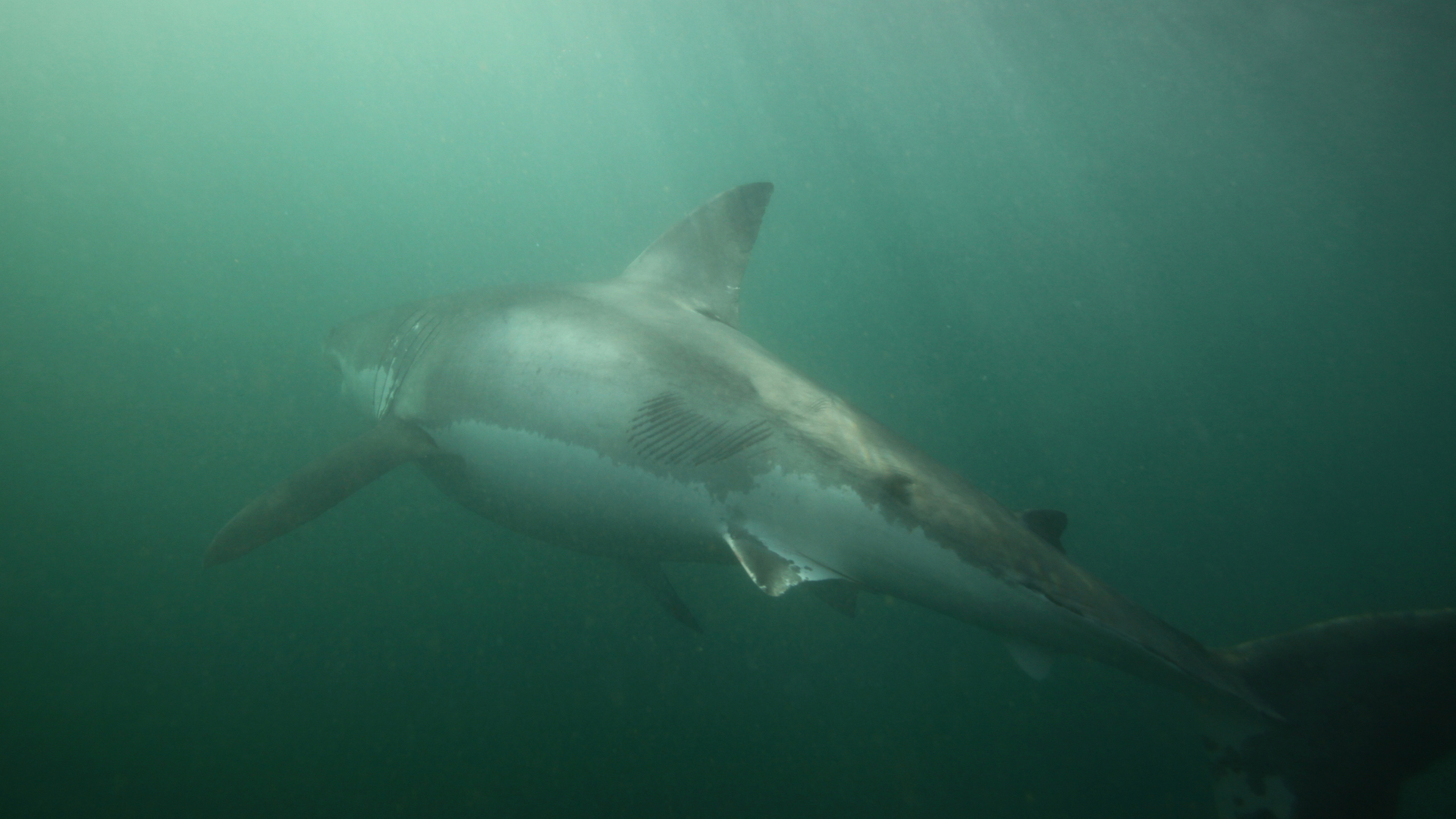
A great white shark with giant scars along its “massive body” may have survived an attack by a pair of orca serial killers that target sharks. Photos show orca teeth marks slashed into the side of the 11.4-foot-long (3.5 meters) shark — apparently from an attempt to rip out and feast on its fatty liver.
The photos of the female great white shark (Carcharodon carcharias) were taken near Seal Island off False Bay, South Africa, in 2017 during a shark-diving expedition.
The timing of these images is key. False Bay used to be a great white shark hotspot , but in 2017 things started to change. Great white sightings started to fall, and by 2019 the sharks had completely abandoned this prime seal-hunting spot. While their disappearance is likely due to a number of factors, scientists believe one of the key drivers was the presence of a pair of orcas (Orcinus orca) — known as Port and Starboard — that had started preying on sharks in the area and eating their livers.
At first, attacks were mostly confined to broadnose sevengill sharks (Notorynchus cepedianus), but soon the orcas began to turn their attention to great whites. Grisly aerial footage released in 2022 showed the pair in action.
RELATED: Photos: Orcas are chowing down on great white shark organs
Finding a great white shark that survived an early attack could help researchers establish a timeline for when the orcas perfected their ruthless hunting technique.
The photos of the scarred great white were published March 14 in the Marine Biological Journal (opens in new tab). Study author Alessandro De Maddalena (opens in new tab), a former adjunct professor of marine vertebrate zoology at the University of Milano-Bicocca in Italy, told Live Science in an email that he believes Port and Starboard were behind this 2017 attack.
However, despite the recent spate of killings, De Maddalena believes that orcas can’t easily tear open great white sharks. “I think the reality is much more complex than that,” he said. “Outside of South Africa, only two cases of orca predation on great white sharks have been recorded to date, and this clearly tells us that great whites are not usual prey for orcas.”
The great white in the photos had a “massive body, with a wide trunk,” De Maddalena wrote in the paper. It was a clear, sunny day, and the shark passed the cage divers several times.
Years later, De Maddalena looked more closely at the images and realized the shark had several scars that looked like tooth rake marks from an orca. His analysis suggests the orca had attempted to grab the shark from above, with the scratches indicating “they were inflicted with significant force,” De Maddalena wrote.
Great white sharks have incredible wound-healing abilities (opens in new tab) as a result of ancient molecular adaptations. De Maddalena told Live Science that it is possible the injuries sustained by the great white shark could have been inflicted just days or weeks earlier, but that it is impossible to know for sure.
“Perhaps the failure of the attack was due to the fact that the orcas were still perfecting their attack technique,” he said. “Or it could simply be that like any predator, they can fail on a regular basis.”
Port and Starboard have recently been on their deadliest killing spree to date, with up to 19 slaughtered sharks washing up in just one day. “This is the largest amount of sharks these orcas have killed in this area in one sitting,” Alison Towner, a marine biologist at Rhodes University who has been leading the research into the orca attacks, said in a statement (opens in new tab). “There could well be more that didn’t wash out.”


